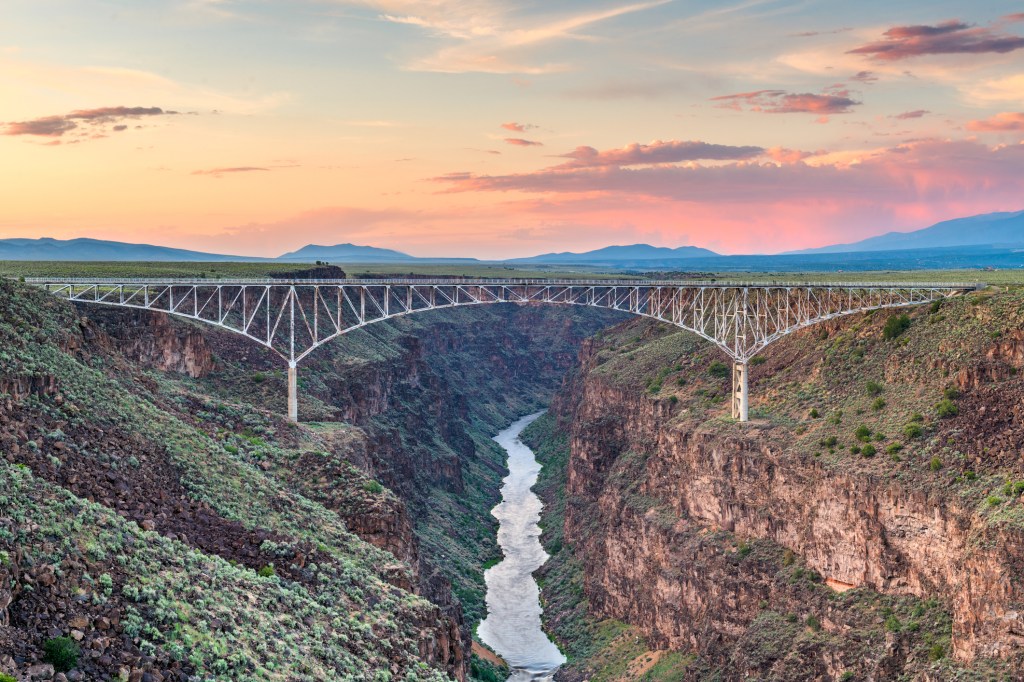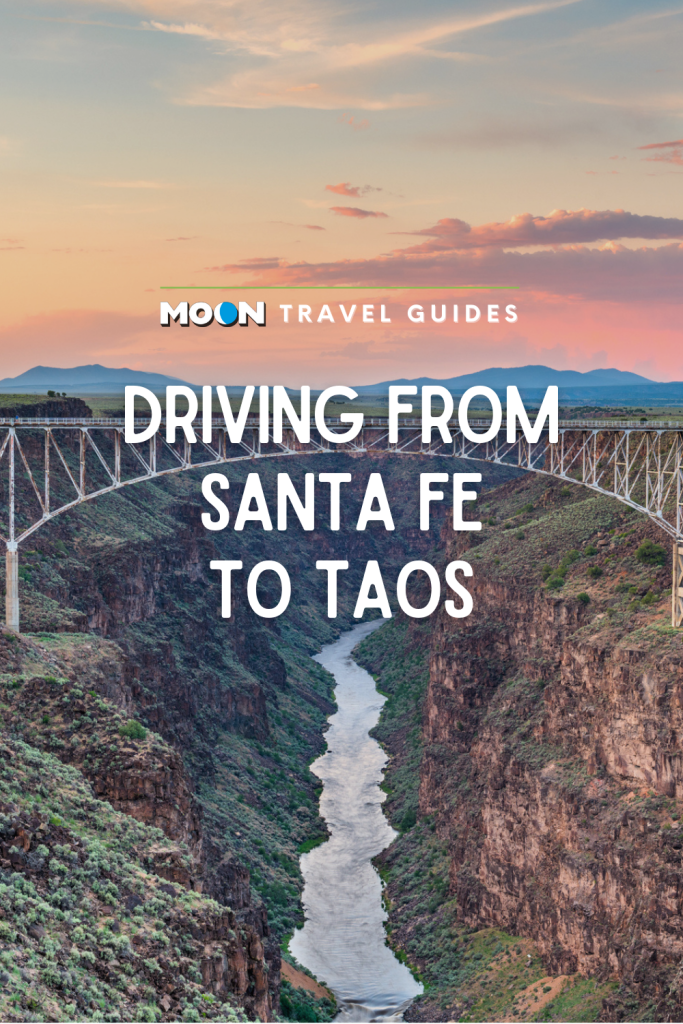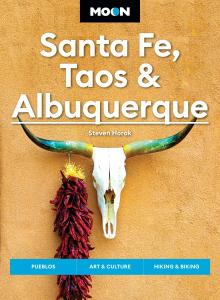Driving from Santa Fe to Taos
Heading to Taos from Santa Fe used to be a fairly straightforward affair, as the two routes between formed a nice scenic loop. The only decision was whether to take the high road through the mountain villages up and the low road along the Rio Grande down—or vice versa.
Then in 2009, the West Rim Road along the edge of the Rio Grande Gorge was paved, creating an easier connection to U.S. 285 and into Española. This driving route (U.S. 285 to Highway 567 to the West Rim Road) passes through Ojo Caliente, with its natural hot springs in a sophisticated spa setting. The rim road itself runs along the sage-covered flatlands west of Taos, giving a great view of the mountains and drops you right at the Rio Grande Gorge Bridge.
So now drivers have three scenic routes between Santa Fe and Taos, which makes route planning a little more complicated.

Three Roads to Taos – Which to Choose?
The easy answer, especially if you’re a first-time visitor to northern New Mexico, is to skip the West Rim Road. Stay with the tried-and-true high-low combination.
I personally prefer to take the low road north because it’s always a thrill to ascend out of the narrow confines of the river gorge onto the high Taos mesa. The view suddenly opens up onto vast sagebrush with the blue Taos Mountain ahead. And at just about the same time, you hit the ‘magpie line,’ the altitude at which the black-and-white birds flourish.
But your schedule might call for taking the high road up instead. Many of the galleries and places to eat, including the excellent Sugar Nymphs Bistro in Peñasco, are open only around the weekend. So if you have your heart set on a wedge of cake at Sugar Nymphs or a rug from The Cordovas Handweaving Workshop in Truchas, check the business hours first.
However. . .
There are still three good reasons to take the West Rim Road to or from Taos.
First, if you’re a spa or hot springs buff, you’ll definitely want to give this route priority over the others. Ojo Caliente Mineral Springs isn’t quite as transporting as Santa Fe’s Ten Thousand Waves, but the red-rock setting is classic New Mexico. And if you want to bathe in arsenic water (for health benefits, truly!), this is the place to do it.
And if you’ve visited the area before, the West Rim Road is a great way to branch off the standard itinerary. To avoid backtracking too much through Española, take the high road up and the West Rim Road down—or the other way around, depending on how your schedule fits with the hours of the springs at Ojo Caliente.
Finally—and this is no small concern—if anyone in your party has a tendency to carsickness, the West Rim Road is your friend. It is dead-straight outside Taos. Highway 567 and U.S. 285 cut through more rolling terrain, but you always have the far horizon in sight to keep your inner ear calibrated. Pair it with the high road; this mountain route is winding, but it rarely feels closed in as the riverside low road does.
Newsletter Signup
By clicking ‘Sign Up,’ I acknowledge that I have read and agree to Hachette Book Group’s Privacy Policy and Terms of Use
For Advanced Drivers
If you still can’t decide, it’s possible to combine bits of all the routes. Look for Highway 275, which connects the low road and the high road via Dixon and passes through dramatic white cliffs. The best way to utilize it is by taking the high road through Chimayó, Truchas, and Las Trampas, then cutting across through Dixon (late lunch at Zuly’s!) and continuing on the low road to score that dazzling welcome-to-Taos view of the mesa. It makes for a long day, but it’s great if you love driving.
On the way back you can visit the Rio Grande Gorge, then set out on the West Rim Road. Where you’d ordinarily turn west on Highway 567 to Ojo Caliente, continue straight and follow the road down into the south end of the gorge. You’ll want a sturdy car with decent clearance—the road turns to dirt and can be quite rutted. You’ll cross the river and enter the Orilla Verde Recreation Area; the road emerges next to the Pilar Yacht Club on the low road (Highway 68). Continue south from here.
In winter, don’t try either of these routes when roads may be snowy or icy, and always check weather conditions. After major snowfall, the low road will be cleared well before the high road is.
The Inevitable
Unfortunately, there is one spot you will always have to backtrack through between Santa Fe and Pojoaque where the highway across pueblo lands is the only through route in the area. It’s a dramatic landscape in the distance, but less attractive with all its roadside casinos and resorts. Still, keep an eye out for Camel Rock, a quick fun photo op, and remember the beauty farther north.
Related Travel Guides
Pin It for Later

